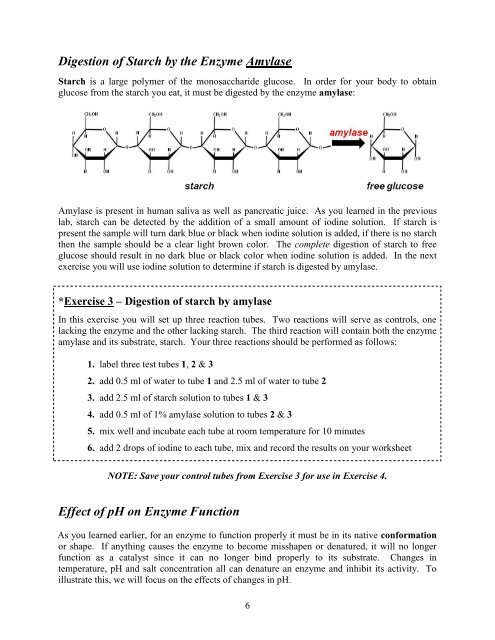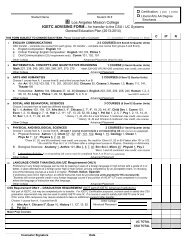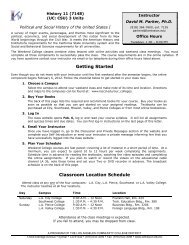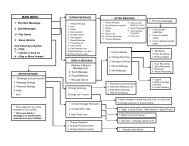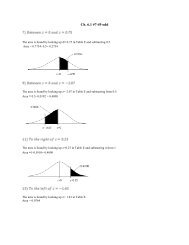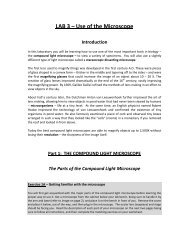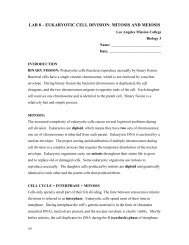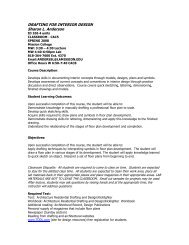Create successful ePaper yourself
Turn your PDF publications into a flip-book with our unique Google optimized e-Paper software.
Digestion of Starch by the Enzyme Amylase<br />
Starch is a large polymer of the monosaccharide glucose. In order for your body to obtain<br />
glucose from the starch you eat, it must be digested by the enzyme amylase:<br />
Amylase is present in human saliva as well as pancreatic juice. As you learned in the previous<br />
lab, starch can be detected by the addition of a small amount of iodine solution. If starch is<br />
present the sample will turn dark blue or black when iodine solution is added, if there is no starch<br />
then the sample should be a clear light brown color. The complete digestion of starch to free<br />
glucose should result in no dark blue or black color when iodine solution is added. In the next<br />
exercise you will use iodine solution to determine if starch is digested by amylase.<br />
*Exercise 3 – Digestion of starch by amylase<br />
In this exercise you will set up three reaction tubes. Two reactions will serve as controls, one<br />
lacking the enzyme and the other lacking starch. The third reaction will contain both the enzyme<br />
amylase and its substrate, starch. Your three reactions should be performed as follows:<br />
1. label three test tubes 1, 2 & 3<br />
2. add 0.5 ml of water to tube 1 and 2.5 ml of water to tube 2<br />
3. add 2.5 ml of starch solution to tubes 1 & 3<br />
4. add 0.5 ml of 1% amylase solution to tubes 2 & 3<br />
5. mix well and incubate each tube at room temperature for 10 minutes<br />
6. add 2 drops of iodine to each tube, mix and record the results on your worksheet<br />
NOTE: Save your control tubes from Exercise 3 for use in Exercise 4.<br />
Effect of pH on Enzyme Function<br />
As you learned earlier, for an enzyme to function properly it must be in its native conformation<br />
or shape. If anything causes the enzyme to become misshapen or denatured, it will no longer<br />
function as a catalyst since it can no longer bind properly to its substrate. Changes in<br />
temperature, pH and salt concentration all can denature an enzyme and inhibit its activity. To<br />
illustrate this, we will focus on the effects of changes in pH.<br />
6


